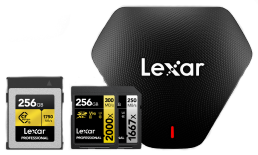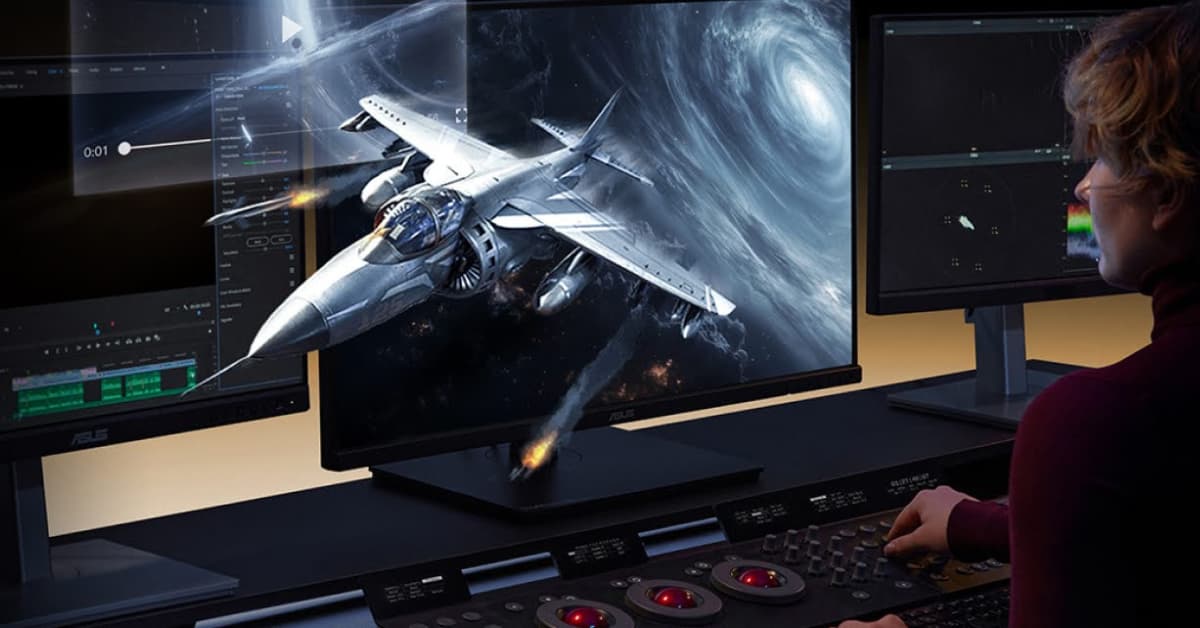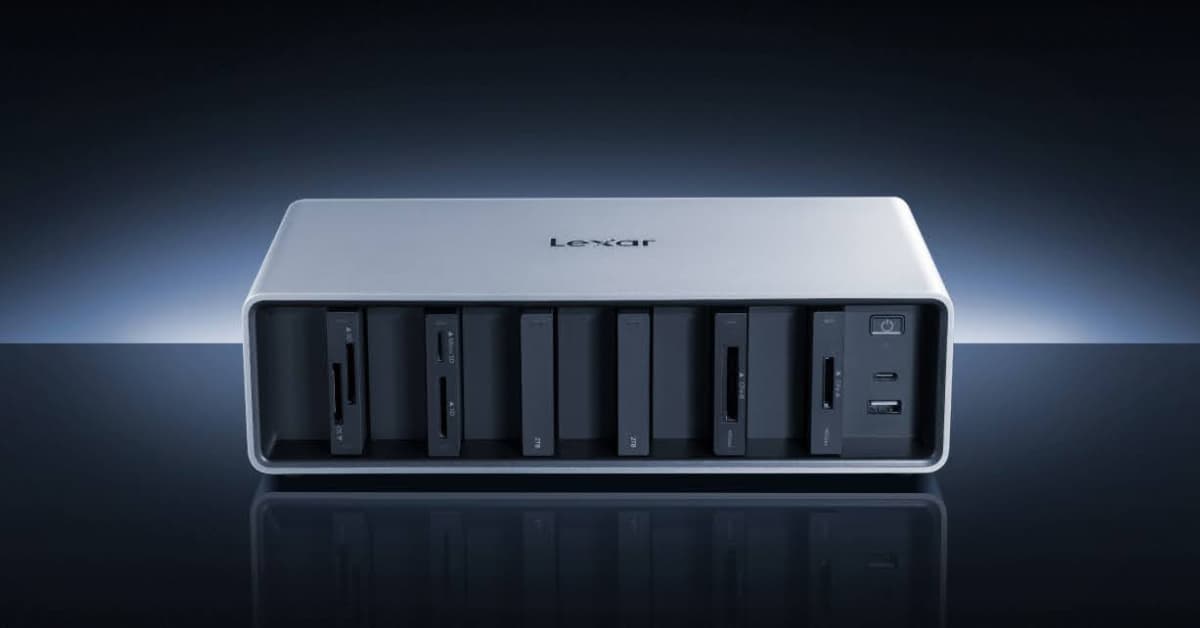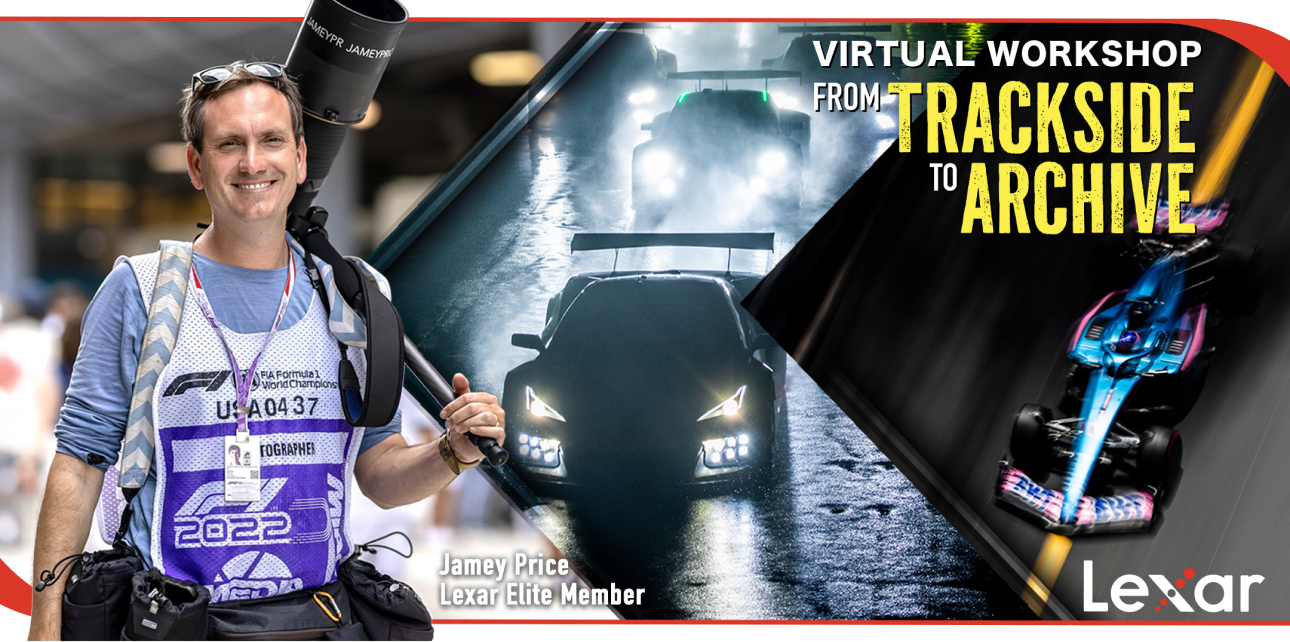
As an award-winning photojournalist travelling the globe, Lexar Elite Team Member Jamey Price has seen it all and done it all. Throughout his travels covering motorsports, he’s also encountered just about every possible storage obstacle you could think of. With first-hand knowledge of the chaos that occurs trackside with storage, Price has developed a thorough backup plan to properly protect every image he shoots.
In this in-depth video discussion and bonus question and answer interview, you’ll get insider tips from Price that explore his race day preparations, camera settings, the gear he carries, the software he uses, and so much more. In a world where you’re only as good as your last race, Price makes sure he has the photos to prove it.
Jamey’s Photography Storage Gear:
Lexar CFexpress 4.0 Type B GOLD Cards
Lexar CFexpress 4.0 Type B DIAMOND Cards
Lexar CFexpress 4.0 Type B Card Readers
Lexar Professional 2000x SD Card GOLD
Lexar Professional Workflow Portable SSD
Pushing limits, breaking records
Lexar: Any tips for how to stay creative and keep your shots different after you have already got the shots clients requested early in the week?
Jamey Price: A lot of the creativity simply comes down to having fun. The more fun you’re having, the more fun the pictures will be, so I try and keep it fun. Or go do something to challenge myself, even if I may not get a fantastic hit rate on the photos.
Thats the “easy” part of photographing car racing: They’ll keep coming around.
“A lot of the creativity simply comes down to having fun. The more fun you’re having, the more fun the pictures will be…”
Lexar: How do you keep your work visually fresh, while also managing the pressure of delivering to multiple clients on tight deadlines, especially during back-to-back race weekends?
JP: Similar to the first question, you want to keep it fun, but sometimes having back-to-back sessions will force you to want to go find something different. Usually by the end of the weekend, I’m really pushing myself to shoot differently or go to different corners.
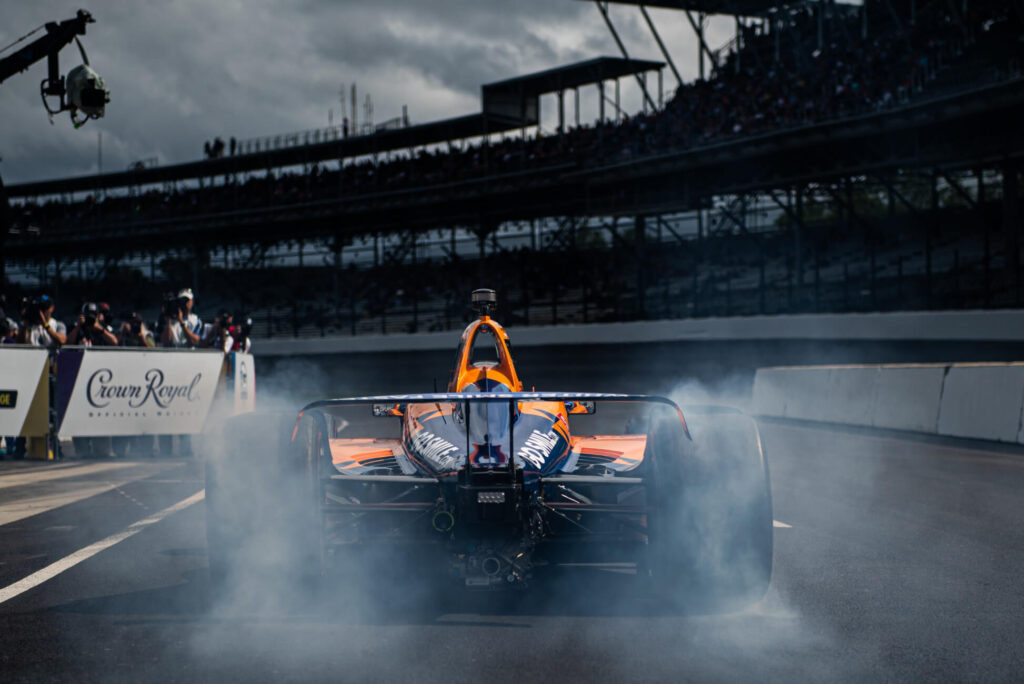
Lexar: How do you organize your portfolio and separate the other commercial pictures you take from the motorsports photographs that are your niche?
JP: A portfolio is only what you want to show the world. Don’t forget that. And your portfolio should be your strongest work. Whatever represents the kind of jobs you want to be hired for.
Making sure your portfolio or Instagram grid reflects you and your work accurately is important. I’m capable of shooting plenty of kinds of photos, but that doesn’t mean I want to do those for a living.
Lexar: Are horizon lines and side angles more of a desire from the brands you work for, or are they more of an artistic, personal preference?
JP: Photography is an art. Everyone has a style.
There are times and places to push the horizon lines and do something interesting. Sometimes it makes a more interesting photo. Getty for example has an interesting rule (when I was working for them) where “cars don’t race up hill. They only race downhill” meaning the horizon / car can only be tilted downhill versus angled uphill.
Ultimately, your style is yours. Your vision is yours. Your client hired you. Not Joe or Jane Amateur. If they wanted Joe or Jane’s style, they should have hired them. You can fit your style within their requests, but changing who you are as an artist or photographer to fit abrief isn’t my style.
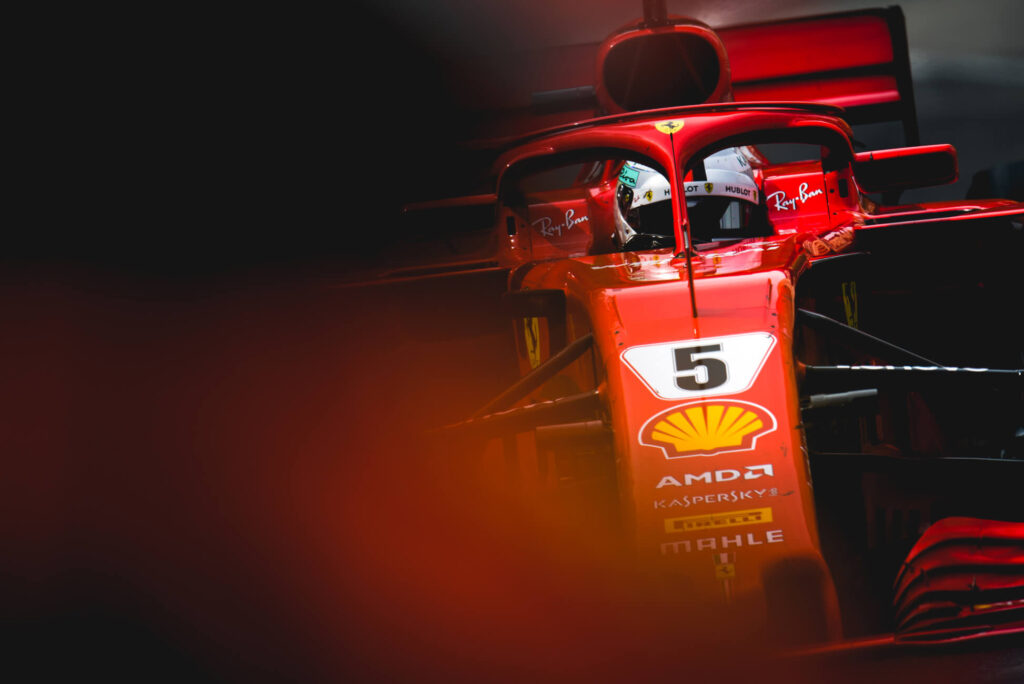
Lexar: For your editing process, do you edit each photo from the original to finished product individually, or do you have presets that you use and then tweak?
JP: I have a very basic preset that’s applied to each photo upon import to Lightroom.
It’s not so much a preset — it’s just an adjustment on contrast or highlights that I usually find attractive in a photo. Doing outdoor sports, the light, the clouds, and the direction to the sun is CONSTANTLY changing.
You never really get photos from one hour to the next that would work for a true preset import and export. So, I adjust each manually.
“Go to events. Go to all the events you can.”
JP: Go to events. Go to all the events you can.
There are tons of racetracks all over the world. You just don’t know about them because they don’t host F1, IMSA, IndyCar, NASCAR, etc. But that doesn’t mean racing doesn’t happen near you.
It’s frustrating when I hear kids say that they live in England or France or Spain or middle America and “there are no racetracks near me.” There are indeed races — it may take a few hours to drive to them, but go to races.
Go to small events. Big events. Be a face that’s recognized by the track or the series, and doors will start to open.

Lexar: When you are working for yourself, are you culling photos on the card or do you transfer them from card to PC and then cull?
JP: I definitely import to my computer and cull from there. It’s not so much culling images, but selecting the images that I find to be the ones that my client will want.
Lexar: How do you know if your photo is sharp in camera? I find myself realizing a shot isn’t sharp after I pull it up on a computer, but it looks sharp at the time.
JP: Partially this is an experience thing. You get used to it.
When I’m doing pans especially, I can feel when I used to get a photo sharp. I actually miss that feeling a lot because with the DSRL cameras you could REALLY feel it. The mirrorless cameras, much less so. But you can still sense it. Just practice. Thats the name of the game with racing and photography.

